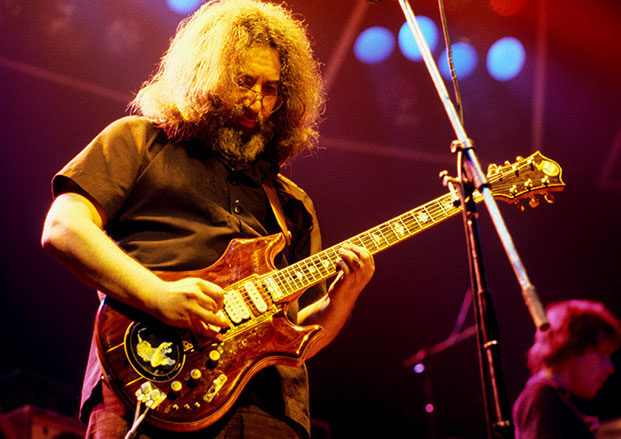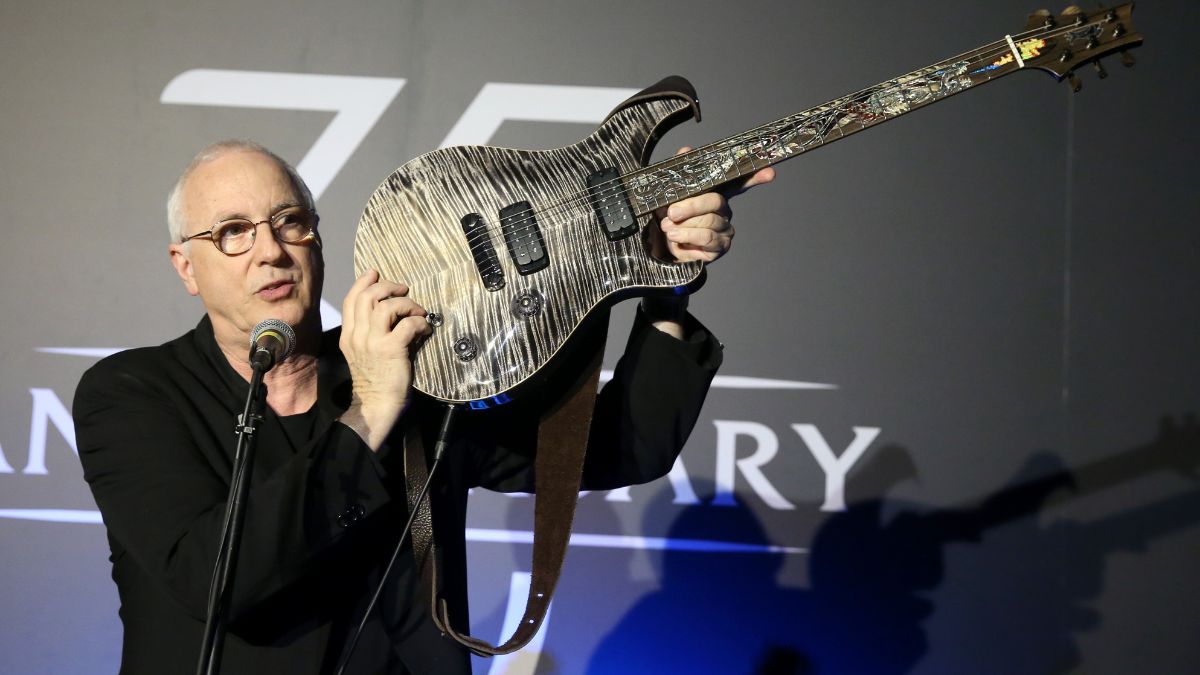Jerry Garcia's Tiger Guitar to Return to the Stage Tonight

Tiger, the custom guitar Jerry Garcia played during his final public performance with the Grateful Dead, will return to the stage in the hands of Warren Haynes tonight, August 1.
Haynes will debut the instrument tonight at Red Rocks in Denver as part of a performance with the Jerry Garcia Symphonic Celebration tour, which features Haynes performing the music of the Grateful Dead with local symphonic orchestras.
Tiger has resided in the collection of Indianapolis Colts owner Jim Irsay since he bought it for $850,000 in 2002, he's loaning it out for this summer's tour. "Because [Garcia's] music lives on, there's a need to preserve the instruments that created the sound," Isray told Rolling Stone. "Tiger needs to be available for future generations to see and hear. I know this instrument, in the right hands, can produce sound capable of moving the human spirit to dance, to tears, and every emotion in between."
Tiger was crafted by luthier Doug Irwin specifically for Garcia in 1979, and, when Garcia's other main guitars were unavailable, was used during his final performance with the Dead at Chicago's Soldier Field on July 9, 1995. In 1972, Garcia began a long association with Irwin when he purchased a guitar called Eagle from the luthier. Garcia liked the guitar so much that he placed a custom order with Irwin. That guitar—dubbed Wolf, for the cartoon wolf sticker Garcia had originally applied below its bridge—was completed in 1973. When Garcia went to pick it up, he was so impressed by it that he placed an order for another custom guitar before leaving.
Wolf became Garcia’s main instrument for the next four years, during which time he asked Irwin to make several modifications, including a buffered effect loop that let him wire his effect pedals to the guitar and bypass them with a switch. Eventually, though, Wolf was replaced by the guitar that Garcia had ordered back in 1973, when he’d received Wolf. That guitar was Tiger, which he received in July 1979.
Garcia had given Irwin total freedom with Tiger, and he was not disappointed. The guitar was beautiful, with contrasting layers of tone woods, including cocobolo, maple and vermillion. Detailed pearl inlays on the body’s back and fretboard heightened the guitar’s status as a work of art.
But Tiger was also a testament to Irwin’s technical innovation. The guitar’s coil-tap switches, five-position pickup selector, unity gain buffer, effect loop and other controls gave Garcia the freedom to craft a broad range of tones from the DiMarzio pickups, which included Dual Sound humbuckers in the middle and bridge positions and an SDS-1 in the neck (the Dual Sounds were replaced in 1982 with DiMarzio Super IIs).
All the latest guitar news, interviews, lessons, reviews, deals and more, direct to your inbox!
“There are 12 discrete possible voices that are all pretty different,” Garcia said of Tiger’s electronics. That tonal power is the reason Tiger was his main guitar for the next 11 years, a continuous run longer than that of any other guitar Garcia played.
Since 1980, Guitar World has been the ultimate resource for guitarists. Whether you want to learn the techniques employed by your guitar heroes, read about their latest projects or simply need to know which guitar is the right one to buy, Guitar World is the place to look.

